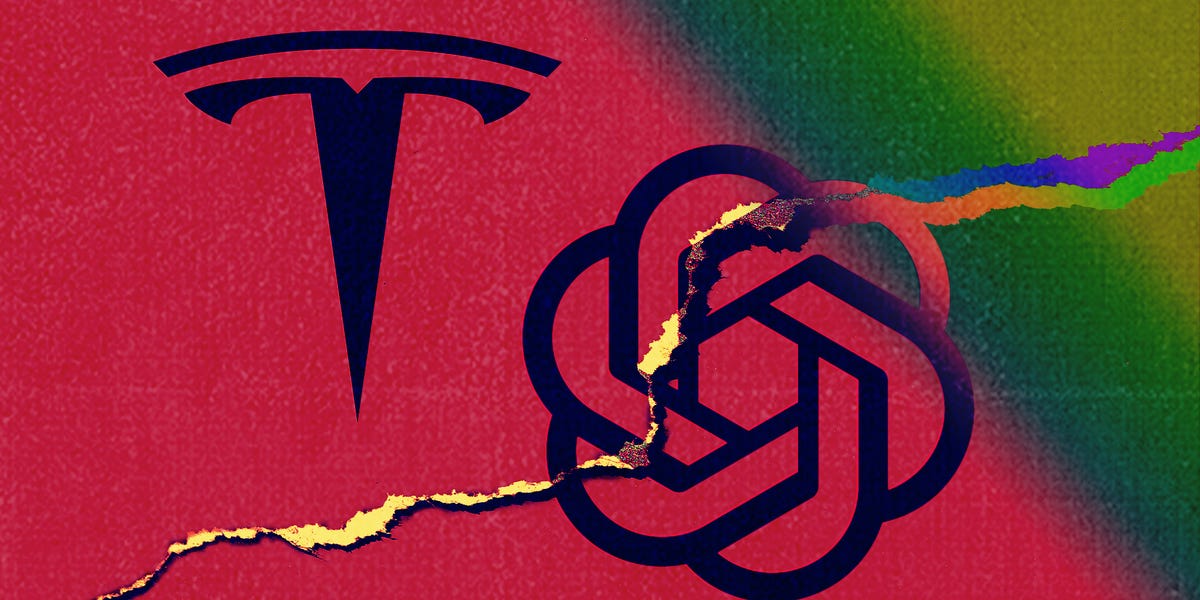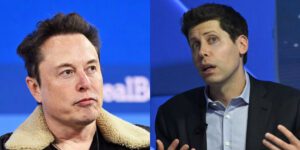- OpenAI posted emails from Elon Musk that showed he wanted the company to merge with Tesla.
- Musk agreed that Tesla was the only option and other large companies would be incompatible partners.
- The emails indicate that Musk supported a for-profit pivot until OpenAI partnered with Microsoft.
Thanks for signing up!
Access your favorite topics in a personalized feed while you’re on the go.
download the app

OpenAI has clapped back at Elon Musk’s lawsuit with emails suggesting the Tesla head not only supported the company’s pivot to a for-profit model — but also wanted his own company to be its “cash cow.”
In a bombshell blog entry that the artificial-intelligence company posted Tuesday night, OpenAI said Musk, who helped found OpenAI, “wanted the company to merge with Tesla or wanted full control.”
The blog post was a response to Musk’s suit, which argues that OpenAI has jeopardized its nonprofit mission by partnering with Microsoft. OpenAI said in its post that Musk sued the company only when it “started making meaningful progress” toward its mission without him.
In an attempt to set the record straight, OpenAI posted a series of emails from Musk that appeared to show he supported OpenAI’s pivot toward creating a for-profit entity. In a 2016 email included in the post, OpenAI’s chief scientist, Ilya Sutskever, said the company would have to be “less open” going forward, to which Musk replied, “yup.”
Business Insider was unable to independently verify the authenticity of the emails, which were partially redacted.
The emails appear to contradict comments the Tesla CEO has made since. Musk said in February 2023 that OpenAI became a “maximum profit company effectively controlled by Microsoft,” which was not what he “intended at all.”
But the emails indicate that Musk didn’t mind the company shifting to a for-profit model — and encouraged it as long as he was in charge.
OpenAI’s post said Musk wanted majority equity and board control, and to be CEO. The company said it was against its mission for one person to have full control over the company and therefore couldn’t reach an agreement with Musk.
Then, in an email sent on January 31, 2018, Musk endorsed someone’s suggestion to make Tesla a “cash cow” for OpenAI and agreed with that person saying other large companies, such as Apple or Amazon, would fail because of “incompatible company DNA.”
“Tesla is the only path that could even hope to hold a candle to Google,” Musk said in an email response to the proposal. “Even then, the probability of being a counterweight to Google is small. It just isn’t zero.”
In late February 2018, Musk chose to leave the company, OpenAI said. He also shared his plans to build an artificial-intelligence competitor within Tesla, which became xAI Corp.
According to an email from Musk in December 2018 included in the blog, Musk said OpenAI had a 0% chance of being relevant without a major change in execution and resources. He added that the tech startup needed “billions per year immediately” to stand a chance. The Tesla CEO wrote at the bottom of the email that he hoped he was wrong.
Musk has been speaking out against OpenAI for a while but recently ramped up his criticism of its mission.
In OpenAI’s announcement, the company said it would seek to have all Musk’s claims dismissed and was “sad that it’s come to this with someone whom we’ve deeply admired.”
Musk, his attorney, and a Tesla spokesperson did not respond to a request for comment from Business Insider.


